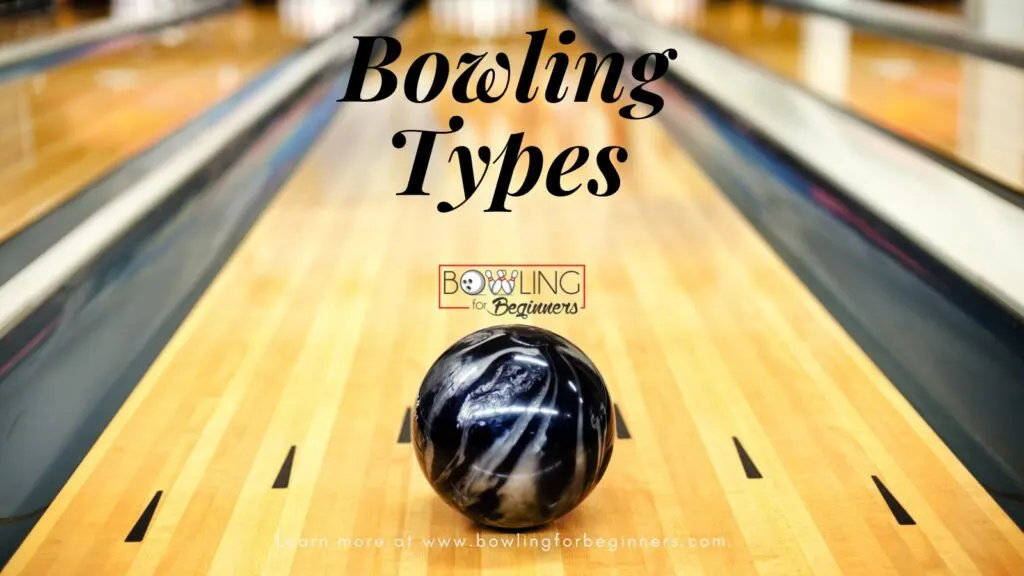
Are you ready to step up your bowling game and become the envy of your league? Whether you’re a beginner or a seasoned pro, mastering different bowling styles can take your game to new heights. We’ll explore a variety of ways bowlers throw their ball (their style) and how they bowl (their technique) that can help you find your unique approach to knocking down pins and scoring strikes. From Crankers to Strokers, spinners to tweens, there’s a style for everyone!
So let’s dive into the exciting world of bowling styles and discover the secrets to improving your game.
Short Summary
Explore different bowling styles and techniques to find what you need to get the highest score!
Master hold, spin & left/right adjustments for improved performance.
Get inspired by professional bowlers to take your game up a notch!
Contents
- 1 Understanding Bowling Styles
- 1.1 What Is A Cranker Bowling Style?
- 1.2 What Is A Stroker Bowling Style?
- 1.3 What Is A Power Stroker Bowling Style?
- 1.4 What Is A Spinner Bowling Style?
- 1.5 What Is A Tweener Bowling Style?
- 1.6 What Is A Straight Bowling Style?
- 1.7 What Is Two Handed Bowling Style?
- 1.8 What Is Palm Bowling (No Holes)?
- 1.9 Other Delivery Styles (Unorthodox & Weird Bowling Styles )
- 2 Mastering Hold Techniques
- 3 Perfecting Spin Techniques
- 4 Adapting to Left Handed and Right Handed Bowlers
- 5 Tips for Choosing the Right Bowling Ball
- 6 Professional Bowlers and Their Styles
- 7 Frequently Asked Questions
Understanding Bowling Styles
Bowling is more than just rolling a ball down a lane and hoping for the best. Bowling has a lot to do with “how” each player roll their ball. Each bowler, in their own way, has their own signature style throw, which can be categorized into a few types:
- Crankers
- Strokers
- Power strokers
- Spinners (4 variations)
- Tweeners
- Straight
- Two Handers (two hands, no fingers or no thumbs)
- Palmers (one hand, no fingers or no thumbs)
- Other Delivery Styles (Unorthodox)
These styles are defined by their respective techniques, which include varying arm swings, lower arm swing, spins, and hand positions. The commonality
Understanding these styles can help you find the one(s) that best fits your strengths, shot, and preference, ultimately leading to a more enjoyable and successful bowling experience.
What Is A Cranker Bowling Style?
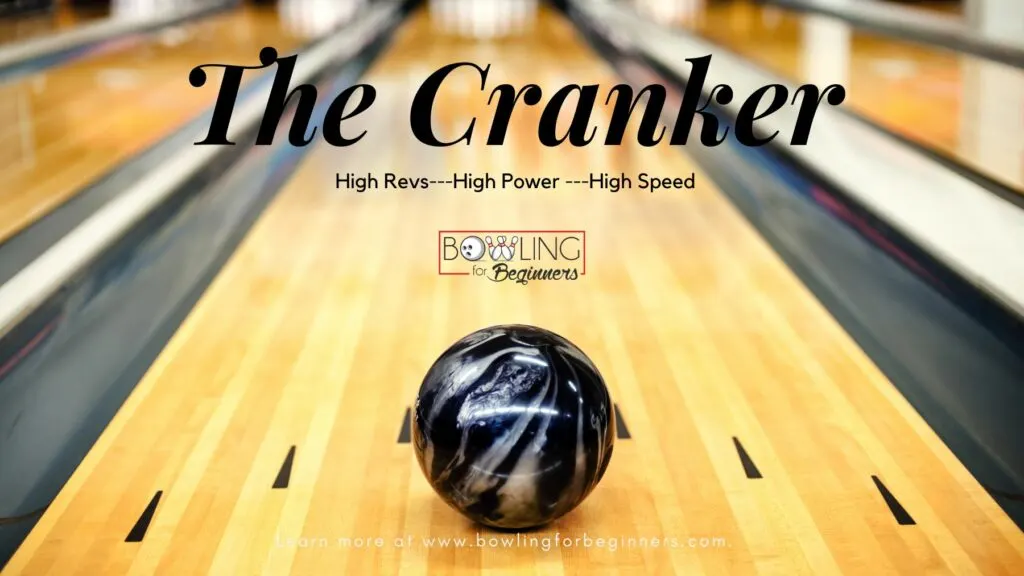
Crankers are the powerhouses of the bowling world, showcasing high strength and speed. They use a cupped wrist and a higher arm swing to generate more ball revolutions and a higher risk of splits. Cranker pros such as Amleto Monacelli, Jason Couch, and Mark Roth have demonstrated the potential of this style, with Roth being the first to convert the thrilling 7-10 split on a televised match.
Left-handed bowlers using this style, start from the far right of the lane and hook the ball back hard to the pocket, while a right hander bowler does the opposite. The high amount of revolutions is what matters most to crankers, but it comes with risks, such as extreme splits among the pins.
Key characteristics of a Cranker include:
- Cupped wrist
- High speed and strength
- High arm swing
Desire high rev rates
What Is A Stroker Bowling Style?

Strokers focus on accuracy and spin, utilizing a med arm swing and square shoulders for a classic bowling form. Their emphasis is on precise ball placement and an angled delivery, and not just speed and power, like a Cranker. This makes Strokers a formidable force on the lanes.
Key characteristics of a Stroker include:
- Medium arm swing
- Square shoulders
- Precise ball placement
- Angled delivery
Wrist control is crucial for strokers, and some even recommend wearing wrist tape for added support.
Stroker pros like Walter Ray Williams Jr. have proven the effectiveness of this style, often winning more consistently than crankers.
What Is A Power Stroker Bowling Style?
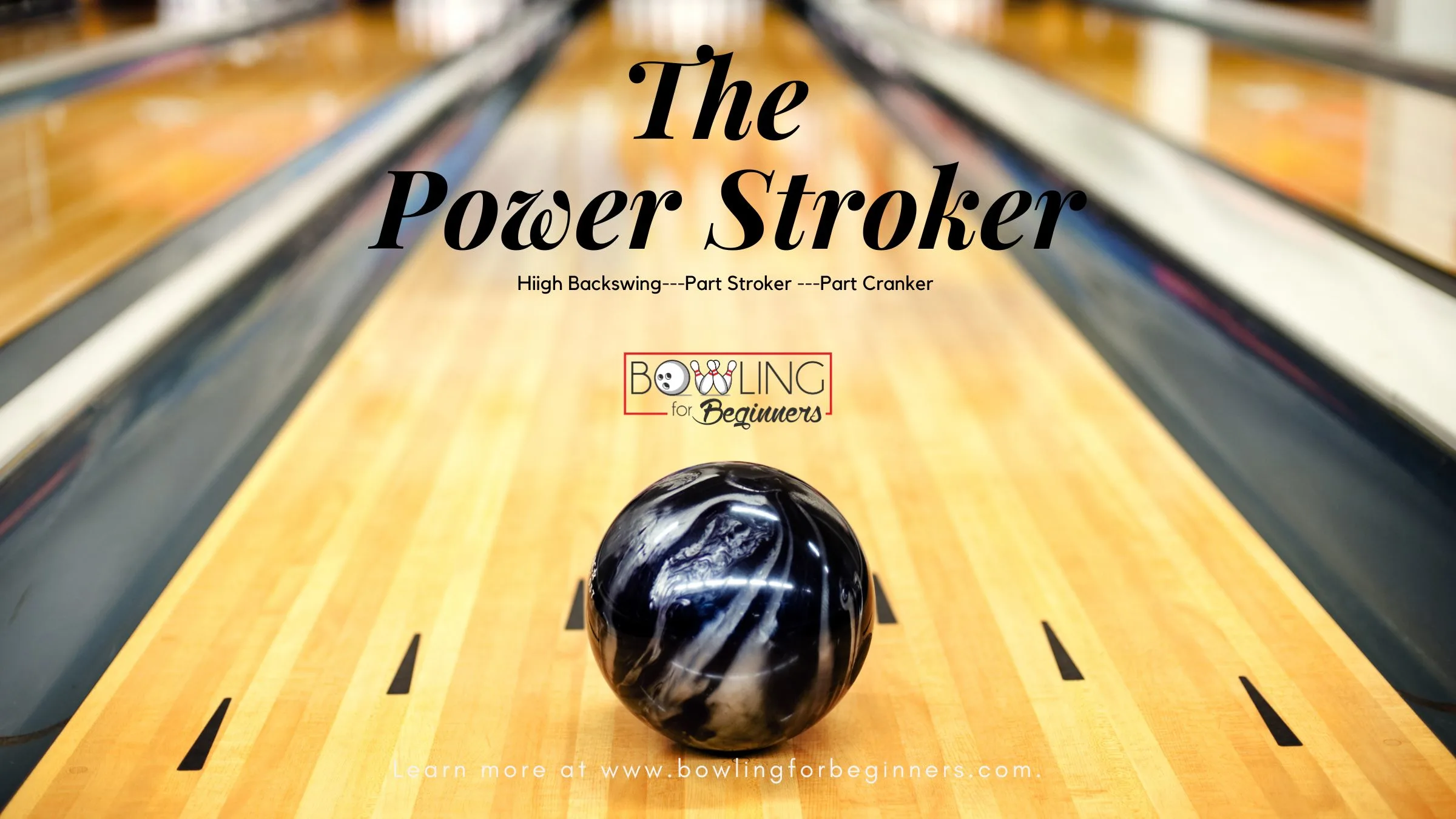
Power Strokers are the children of both Crankers and Strokers, using both stroker spin and cranker power to consistently score strikes. They strike a balance between control and power, making them a popular choice among bowlers looking to improve their hook and revolutions.
Power Stroker pros like Pete Weber, known for his fiery personality and impressive achievements, exemplify the potential of this style. Weber even passed the 2 million dollar mark in career earnings in 1997.
Key characteristics of Power Strokers include:
- Hand position cupped
- Bowler’s wrist is straight and flexible
- Squared shoulders
- Bent Arm (slight)
What Is A Spinner Bowling Style?
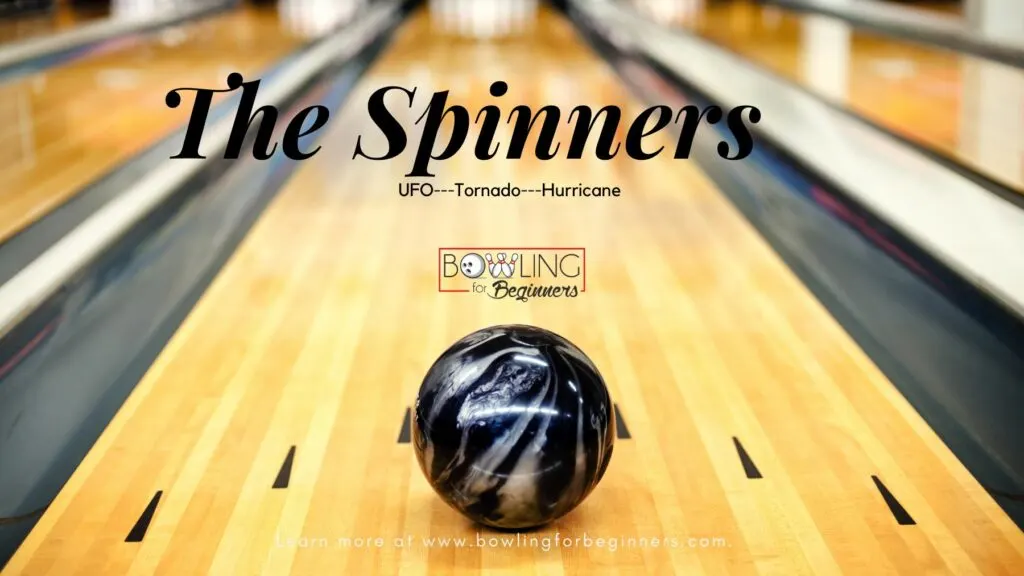
Spinners prioritize ball spin delivery over speed, often using lighter balls to achieve more vertical spin and a unique approach to the pins. This style can be challenging to master but offers a distinct advantage when it comes to lane conditions, as the ball’s vertical spin creates a different pin action than other styles.
Spinners may find success in specific environments or as a strategic change-up during a game. Here are 4 variations of spinning:
- UFO/Tornado/Hurricane
- Left Side
- Centre Lane
- Right Side
Key characteristics of a Spinner bowler:
- Hand position is on top
- The bowling ball is not cupped
- The arm/elbow is relatively straight on release
What Is A Tweener Bowling Style?
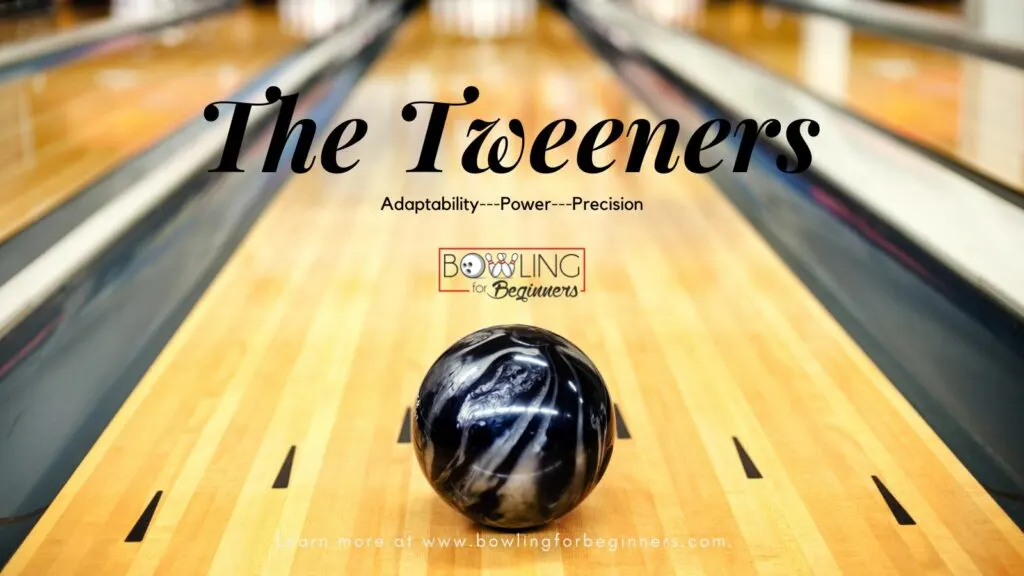
Tweeners are a versatile mix of cranker and stroker styles, offering moderate spin rates and increased consistency in hitting targets. These bowlers can adapt their wrist position and speed to meet different lane conditions, giving them an edge over less adaptable players. However, they may struggle with consistency and making the right adjustment quickly enough.
Tweeners find their strength in their ability to adapt and find the sweet spot between power and precision.
Key characteristics of a Tweener bowler:
- Straight wrist/hand position
- Mod rev rate and rotation
- Medium swing rate
- Modern ball hook motion
What Is A Straight Bowling Style?
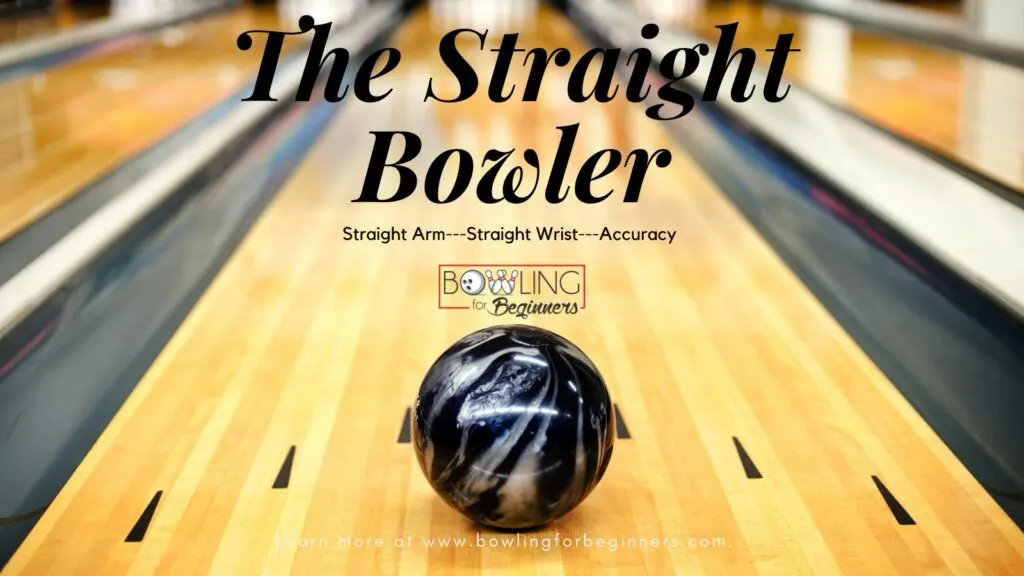
Straight bowling, the most classic form, and basic technique suitable for beginners and anyone picking up spares, happens when the ball rolls directly toward the pins’ pocket. Although you’re bowling straight, you should aim straight into the pocket between the 1 and 3 (right handers) or 1 and 2 (left handers).
You never want to hit the pins straight on. The simplicity of this technique allows for easy control and accuracy, but it may not be as effective as other techniques for scoring strikes.
To practice straight bowling, focus on releasing the ball with minimal to no spin and maintaining a straight path toward your target, ensuring it follows a straight line trajectory. This may require you to pick up a house or plastic ball.
Key characteristics of a Straight bowler:
- Straight wrist/hand position
- Mod rev rate and rotation
- Medium swing rate
- Modern ball hook motion
What Is Two Handed Bowling Style?

Two handed bowling, as the name suggests, involves the use of both hands to deliver a hook ball down the lane. Unlike traditional one-handed bowling, the two handed approach offers numerous advantages, including increased rev rates, improved pin carry, and enhanced control.
By incorporating the non-bowling hand into the delivery, bowlers can generate additional power and spin, resulting in a more aggressive and dynamic ball motion as well as high ball speed.
Here’s a step-by-step guide to help you get started with two-handed bowling:
- Proper Ball Selection: Choose a bowling ball that suits your skill level and lane conditions. Consult with a professional to determine the ideal weight, coverstock, and core design that aligns with your two-handed bowling style.
- Approach and Setup: Begin your approach by standing with your dominant side foot slightly ahead of the non-dominant foot. Position the ball in your non-bowling hand, allowing it to rest against your body.
- Grip and Stance: Adopt a comfortable and relaxed grip, ensuring that your fingers are inserted into the holes up to the second knuckle. Maintain a balanced stance with your knees slightly bent, ready to initiate the approach.
- Back swing and Delivery: Initiate the backswing with your non-bowling hand, guiding the ball towards the top of your backswing. As the ball descends, transfer its weight to your bowling hand, maintaining a firm wrist position. Begin your forward motion, releasing the ball with a smooth, controlled motion toward the target.
- Follow-Through: Extend your bowling arm towards the target and allow it to swing upwards and outwards, promoting a natural and fluid follow-through. Focus on maintaining a consistent release point and follow the ball’s path with your eyes.
Key characteristics of Two-Handed Bowling:
- Increased Rev Rate
- Enhanced Pin Carry
- Improved Control
What Is Palm Bowling (No Holes)?
Palm bowling allows the bowling ball to sit in the palm of your hand as your release it. What makes Palm bowling different is you are bowling without fingers or thumbs, fingerless bowling. Any type of bowling ball can be used, undrilled, or drilled. To use this style of bowling, your hands have to be big enough to actually allow the ball to sit in your palm.
You also need enough arm strength to swing the ball and control it until you release it or a lighter ball. This style of bowling can be used with or without inserting your fingers and thumb.
How to Use a No-Holes or Palm Bowling Ball:
- Find Your Comfort Zone: Begin by experimenting with different hand positions and grips.
- Focus on Technique: With no holes in the ball, the focus shifts to your release technique. Pay close attention to your approach, swing, how the ball is balanced, and release to ensure consistent and accurate delivery. Concentrate on maintaining a smooth and controlled motion throughout your throw.
- Embrace Adaptability: Palm bowling empowers bowlers to adapt to varying lane conditions. Experiment with speed, angle, and rotation to optimize your game.
Other Delivery Styles (Unorthodox & Weird Bowling Styles )
Unorthodox bowling represents a thrilling departure from the norm, offering bowlers a chance to unlock their full potential through creativity, adaptability, and strategic risk-taking. By embracing your individual style, seeking inspiration, experimenting fearlessly, and learning from setbacks, you too can embark on an exciting journey toward unorthodox mastery. So, step onto the lanes, trust your instincts, and unleash your inner maverick—the world of bowling is yours to reshape.
Mastering Hold Techniques
The way you hold your bowling ball can have a significant impact on your performance. Mastering different hold techniques can influence how the ball rolls, allowing you to adapt your game to different lane conditions and situations. The three main hold techniques are:
- Relaxed hold
- Firm hold
- Strong hold
Each hold technique has its benefits and drawbacks, depending on your skill level and bowling style. Let’s explore each hold technique and how they can improve your game.
Relaxed (Top Spin) Hold
A relaxed hold allows for more control and a smoother release, ideal for beginners and those focusing on accuracy. To use a relaxed hold technique, hold the ball loosely in your hand and wrist to reduce tension. This will allow for a smoother release and more control, making it ideal for beginners and those focusing on accuracy.
By mastering the relaxed hold, you can build a strong foundation for your bowling technique before moving on to more advanced holds.
Firm Hold
A firm hold provides a balance between control and power, suitable for intermediate bowlers looking to improve their hook and revolutions. When using a firm hold, it is important to grip the ball tightly with your fingers and thumb, while maintaining consistent gripping pressure throughout the entire swing cycle.
This balance allows you to generate more spin and hook, ultimately improving your performance on the lanes.
Strong or Loaded Hold
A strong or loaded hold maximizes power and revolutions, often used by advanced bowlers and crankers for high-scoring strikes. To achieve a strong/loaded hold, grip the ball firmly and keep your wrist and arm straight. This technique requires practice and skill to master, but once perfected, it can lead to impressive results and higher scores.
Perfecting Spin Techniques
Spin is a critical element of bowling, as it can greatly affect the movement of the ball and the resulting pin action. So, we will explore both the spin techniques and the three main spin techniques: straight bowling, hook bowling, and backup bowling. Each spin technique has its benefits and challenges, so understanding and perfecting these techniques can help you improve your bowling style and increase your scores.
Straight bowling is the most basic spin technique, and it involves rolling the ball with minimal effort.
Hook Bowling (Understanding the YoYo Effect)
Hook bowling involves a directional change down the lane, permitting the ball to hook into the pocket, for consistently angled delivery, and increasing the chances of strikes and higher scores with practice and mastery. The hooking motion gives the ball the perfect angle into the pocket for maximum pin action, a better hook shot, and leading to more strikes.
To practice hook bowling, follow these steps:
- Release the ball with a slight spin using a bowling style above
2. Adjust your wrist rotation to achieve the desired curve as described above
3. As you become more comfortable, increase the spin and curve for better results.
Backup Bowling/ Reverse Hook
Backup bowling is a challenging technique, not typically recommended but preferred by some players for its unique approach. This technique involves turning the wrist clockwise (for a right-handed bowler) instead of counter-clockwise, causing the backup ball to curve in the opposite direction of a conventional hook shot. The reverse hook bowl is an alternative name for this technique.
While this technique can surprise opponents and throw them off their game, it is difficult to master and control, making it a less popular choice among bowlers.
Unbeknownst to me, I actually bowled reverse hooks early on. I just didn’t know it had a name. The Reverse Hook was not my main bowling style, but it’s what I used to clear the ten-pin spare.
To execute a backhand bowl, I’d approach the foul line from the left side of the lane. As I approach and swing, at the point of release, I would twist my wrist outward (left to right). This created backhand wrist action to create a reverse spin, which results in the ball curving outward (left), then inward (right) towards the target at the last moment in the right corner.
The backhand technique requires careful control of the wrist. For control, I typically wore a simple wrist brace to help support my wrist. Practice is crucial to develop the necessary muscle memory and consistency in executing the reverse hook. It is a challenging technique to master, but with dedication and practice, it can become a valuable asset in my bowling arsenal.
Adapting to Left Handed and Right Handed Bowlers
Whether a left-handed or right-handed bowler, understanding the differences between the two and adapting your style accordingly is crucial for consistent performance and success.
In this section, we will discuss the adjustments left-handed and right-handed bowlers need to make to ensure they can perform at their best on the lanes.
Left-Handed Bowlers
Left-handed bowlers need to adjust their approach, release, and spin direction to achieve the desired results on the lanes. For example, when using a hooking technique, left-handed bowlers should start on the left side of the lane before changing direction and moving right to hit the pocket (the one and the two pin).
By understanding these adjustments and practicing them consistently, left-handed bowlers can enhance their performance and achieve greater success on the lanes.
Right-Handed Bowlers
Right handed bowlers follow the standard techniques and approaches, but can still benefit from understanding left-handed adjustments for versatility. For example, when using a hook technique, right handed bowlers stand on the right side of the lane before moving towards the left to hit the one and three pockets.
By being familiar with these adjustments, right-handed bowlers can stay adaptable and improve their overall performance.
Tips for Choosing the Right Bowling Ball
The right bowling ball can make a world of difference in your performance on the lanes. From the weight and material to customization options, there are several factors to consider when choosing the perfect ball for your game.
Weight
Selecting the appropriate ball weight ensures better control, accuracy, and power, preventing strain or injury. The ideal weight for a bowling ball is around 10% of your body weight, up to 16 pounds. However, the weight of the ball can also depend on the bowler’s strength and experience.
By finding the perfect balance between comfort and control, you can significantly improve your performance on the lanes.
Material
Choosing the right ball material can impact your hook potential and overall performance. Here are some options to consider.
Plastic balls: These are ideal for beginners due to their smooth feeling and firm grip.
Urethane balls: Similar to plastic balls, urethane balls are also great for beginners.
Reactive resin balls: These offer greater hook potential and are more suitable for more advanced bowlers.
Understanding the characteristics of each material and selecting the right one for your skill level and style can greatly enhance your performance.
Customization
Customizing your bowling ball with proper drilling and fit can improve your comfort, control, and consistency on the lanes. Here are some ways to customize your bowling ball.
Proper drilling ensures a better fit for your fingers and thumb.
Customizing the ball’s surface texture can enhance its performance.
Customizing the ball’s design can enhance its appearance.
By customizing your bowling ball, you can optimize your bowling experience.
By investing in a customized bowling ball tailored to your unique needs and preferences, you can elevate your game and boost your confidence on the lanes with the right choice of bowling balls.
Professional Bowlers and Their Styles
Exploring the bowling styles and techniques of professional bowlers can provide valuable insights into what works best for different players. We will look at some professional bowlers and their styles, including cranker, stroker, and power stroker pros.
By studying their techniques and successes, you can gain inspiration and insight into the most effective ways to improve your own game.
Cranker Pros
Cranker pros like Jason Belmonte, Robert Smith, and Mike Fagan showcase the high power and speed potential of the cranker style. These bowlers often use a high arm swing and a cupped wrist to generate more revolutions and a higher risk of splits. By studying their techniques and successes, aspiring crankers can learn valuable lessons about the potential of this style and its unique challenges.
The cranker style is a powerful and fast way to bowl, but it also carries weight.
Stroker Pros
Stroker pros like Walter Ray Williams Jr., Norm Duke, and David Ozio demonstrate the precision and consistency achievable with the stroker style. These bowlers focus on:
- Accuracy
- Spin
- Using a medium arm swing
Square shoulders for a classic form.
By emulating their techniques and learning from their experiences, aspiring strokers can refine their skills and achieve greater success on the lanes.
Power Stroker Pros
Power Stroker pros such as Pete Weber, David Ozio, and Dick Weber exemplify the balance of power and accuracy that defines the Power Stroker style. These bowlers combine the best aspects of crankers and strokers, using spin and power to consistently score strikes.
By studying their styles and techniques, aspiring power strokers can gain valuable insights into the potential of this style and hone their skills for greater success on the lanes.
Frequently Asked Questions
How many types of bowling are there?
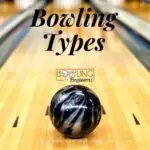
5 main
If you’re an avid bowler, you’ll be thrilled to know that there are five distinct bowling types – traditional ten-pin bowling, candlepin bowling, duckpin bowling, nine-pin bowling, and five-pin bowling!
Each game has its own unique set of rules, lane size, pins, and ball shape.
What is tweener bowling style?
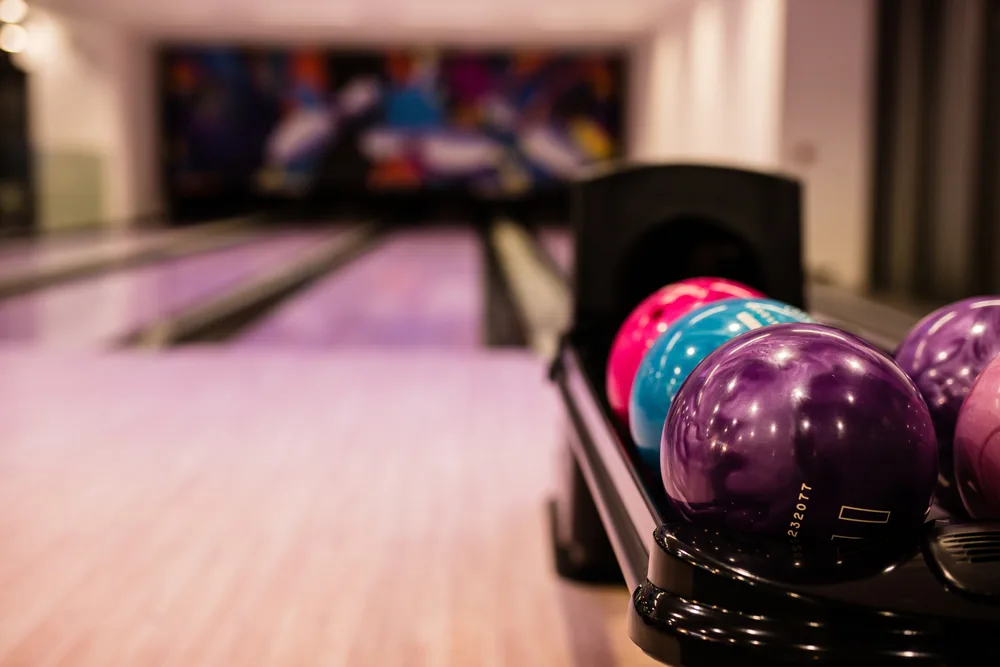
Tweeners are bowling styles that sit between a stroker and cranker style. It’s an exciting combination of speed and power; their rev rate is around 300-370 rpm.
Get ready to wow your opponents with this thrilling tweener bowling style!
What are the main bowling styles?

Cranker, Stroker, Power Stroker, Tweens and Spinners
Discover your inner bowler with the different bowling styles! Crankers, strokers, power strokers, spinners, and tweens are all popular ways to bowl. Depending on the shot, and lane conditions, you may find you may need to add to your bowling style repertoire.
What is the difference between a cranker and a stroker?

Speed and power versus control and consistency.
Crankers rely on explosive speed and power to dominate matches, while strokers focus on control and consistency to win points.
How can I improve my hook bowling technique?

Start with your release.
If you want to improve your hook bowling technique, focus on developing the perfect release with a slight spin and master your wrist rotation for the best curve or hook.
With some practice, you’ll be rolling strikes like a pro!
Related Articles
Mastering different bowling styles and techniques can significantly improve your performance on the lanes. By understanding the unique characteristics of crankers, strokers, power strokers, spinners, and tweeners, as well as mastering hold and spin techniques, and getting fewer ball revolutions, you can find the perfect style to suit your strengths and preferences.
Furthermore, choosing the right bowling ball and learning from the successes of professional bowlers can provide valuable insights and inspiration for your own game. So go forth and conquer the lanes with your newfound knowledge and skills!
Kira Byrd, a Certified Fraud Examiner, holds a B.S. in Accounting from the University of Alabama at Birmingham. With a passion for bowling from her childhood, Kira has poured her expertise and personal experiences into creating and nurturing Bowling For Beginners. Kira’s mission is to meet new bowlers where they are and guide them toward consistently achieving higher scores. With a focus on skill development and strategic techniques, she empowers readers to take control of their game and unlock their true potential.
Bowling For Beginners embodies strict editorial integrity, ensuring reliable and unbiased information. Kira’s commitment to delivering valuable insights and practical strategies is reflected in every article. Here’s an explanation of our editorial policy and how we get money.

